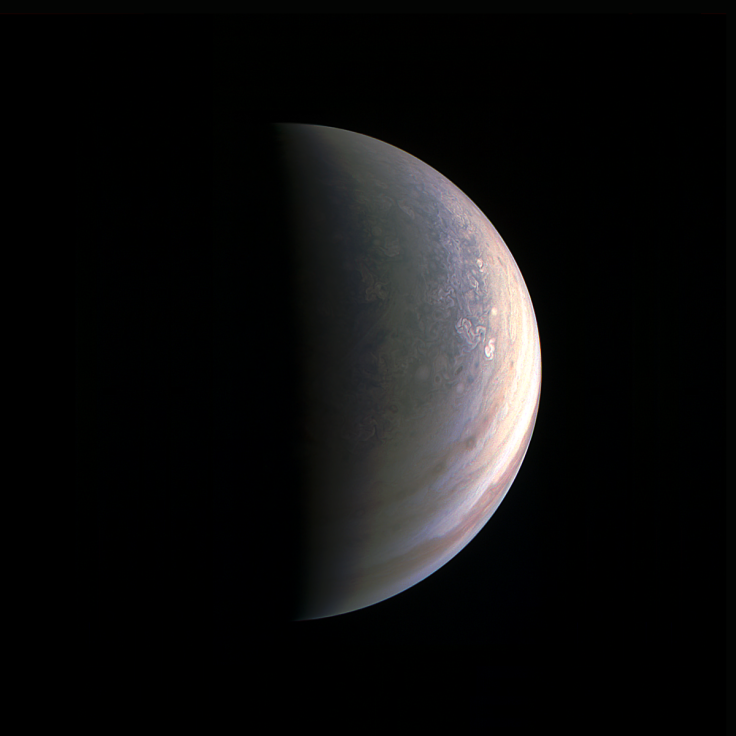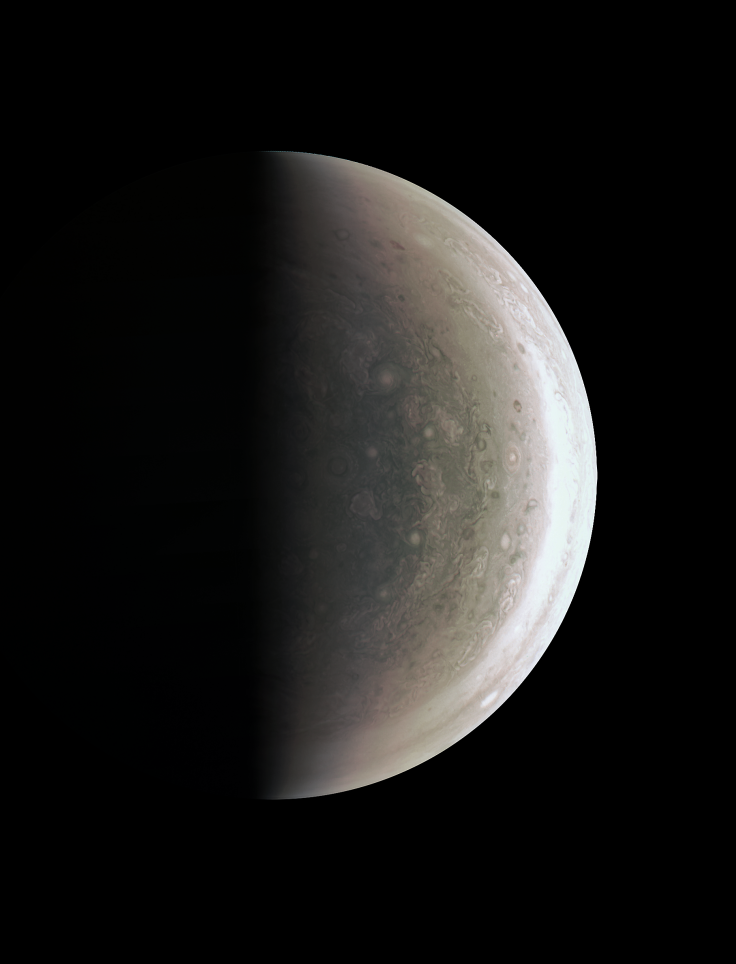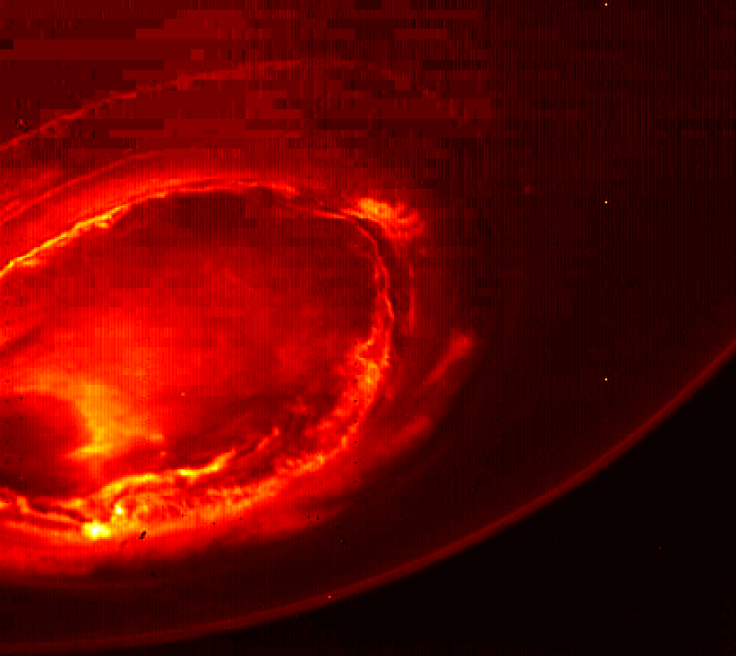NASA’s Juno Beams Back First-Ever Images Of Jupiter’s North Pole

NASA’s Juno has beamed back the first-ever images of Jupiter’s north pole, taken during the first of its three dozen flybys. The images, captured on Aug. 27, show storm systems and weather activity that are unlike anything seen on the other gas giants of our solar system.
“First glimpse of Jupiter’s north pole, and it looks like nothing we have seen or imagined before,” said Scott Bolton, principal investigator of Juno from the Southwest Research Institute in San Antonio, said in a statement released Friday. “It’s bluer in color up there than other parts of the planet, and there are a lot of storms. There is no sign of the latitudinal bands or zone and belts that we are used to -- this image is hardly recognizable as Jupiter. We’re seeing signs that the clouds have shadows, possibly indicating that the clouds are at a higher altitude than other features.”
The images of the pole were captured two hours before Juno’s closest approach. Data gathered during the six-hour transit, which adds up to just six megabytes, took one-and-a-half days to complete.
This data is still being analyzed.
The JunoCam instrument on board the spacecraft also captured an image showing a never-before-seen perspective on Jupiter's south pole.
The image, captured when the spacecraft was roughly 58,700 miles above the polar region, shows that unlike the belts and zones found in the equatorial regions, the pole is mottled by clockwise and counterclockwise rotating storms of various sizes.

Last week’s flyby marked the first time all eight science instruments Juno is carrying were active. As a result, the Jovian Infrared Auroral Mapper also managed to acquire images of Jupiter at its north and south polar regions in infrared wavelengths, revealing several warm and hot spots.
“While we knew that the first-ever infrared views of Jupiter's south pole could reveal the planet's southern aurora, we were amazed to see it for the first time. No other instruments, both from Earth or space, have been able to see the southern aurora,” Alberto Adriani, JIRAM co-investigator from Istituto di Astrofisica e Planetologia Spaziali in Rome, said in the statement. “Now, with JIRAM, we see that it appears to be very bright and well-structured. The high level of detail in the images will tell us more about the aurora’s morphology and dynamics.”

Terrestrial aurorae are produced when charged particles, known as coronal mass ejections (CMEs), enter Earth’s magnetosphere — a region of space formed by the interaction between stellar winds and the planet’s magnetic field. Once within the magnetosphere, Earth’s magnetic field lines direct the charged particles toward the poles, where they collide with gas atoms in the atmosphere and produce the bright emissions associated with aurorae. Oxygen, for instance, produces the green colors in an aurora while nitrogen causes blue or red colors.
On Jupiter, solar winds carrying the CMEs compress Jupiter’s magnetosphere, shifting its boundary inward by more than a million miles. This gives rise to energetic X-rays in Jupiter’s aurorae, which cover an area bigger than the surface of Earth.
“Jupiter is talking to us in a way only gas-giant worlds can,” Bill Kurth from the University of Iowa, co-investigator for the Waves instrument, said. “Waves detected the signature emissions of the energetic particles that generate the massive auroras which encircle Jupiter’s north pole. These emissions are the strongest in the solar system. Now we are going to try to figure out where the electrons come from that are generating them.”
Juno was launched in August 2011 and traversed nearly 2 billion miles of space to reach Jupiter. The primary goals of the $1.1 billion mission are to find out whether Jupiter has a solid core, and whether there is water in the planet's atmosphere — something that may not only provide vital clues to how the planet formed and evolved, but also to how the solar system we live in came into existence.
At the end of its mission, Juno will dive into Jupiter's atmosphere and burn up — a "deorbit" maneuver that is necessary to ensure that it does not crash into and contaminate the Jovian moons Europa, Ganymede and Callisto.
“The largest planet in our solar system is truly unique. We have 36 more flybys to study just how unique it really is,” Bolton said.
© Copyright IBTimes 2025. All rights reserved.






















